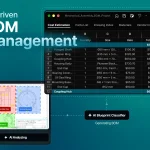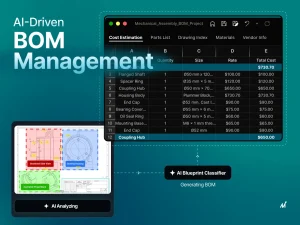But you’ve probably also encountered protocols without even knowing it, whenever you relied on a web browser, an email server, a video site such as YouTube or Spotify, in fact just about anything that happens on the internet.
Getting a basic grasp of these concepts will instill you with a fundamental understanding of how the internet works, and you can refer back to these cards for primers on some key network protocols.
IP Addresses
Any time you surf the web, write an email, or stream video, you are using a core component of internet infrastructure: IP addresses. An IP address, say 255.12.4.x, tells every network device how to reach its equivalent number, and enables communication between the two of them.
Today, the data that flows across the internet travels by a system of standardised instructions called the TCP/IP protocols. TCP (for Transmission Control Protocol) breaks up each unit of data into one or more discrete bundles of information (technically, packets of bits), sends them down the network, and reassembles them at each successive gateway computer that relays the packets on towards their digital destination.
An IP address comprises two elements, the ‘host’ part that identifies a particular device, and the ‘network’ part identifying that item’s location in its network. IP addresses can be, but are not necessarily, either ‘static’ meaning they are never reused or ‘dynamic’, meaning that they are frequently reused. Most consumer ISPs use collections (‘pools’) of IP addresses that they can re-allocate from customer to customer, saving money and making the job easier to track their use.
Routing
When you type a URL into your browser, for example, the IPT converts it to an IP address and then forwards that data directly to its final destination. Routing is one of many protocols that fit under the IPT umbrella and are integral to modern networking, in fact.
Keith Barker explains how in the lower network layer – which looks after things like Ethernet cables and Wi-Fi connections – these routing protocols are used to forward the packets of data across its networks. When networks join together, there are new networks that need to share available routes with each other. For example, imagine there are two networks called “ACME-HQ” and “ACME-BRCKS” and “ACME-HQ” wants to join forces with “ACME-BRCKS”. Keith Barker explains this information is used when route redistribution takes place.
Much as the routing of mail is dependant on the destination address on the envelope, internet protocol suites segregate data into smaller packets, each identifiable by its IP address, that get nudged downstream through the web by routers acting as digital traffic cops.
Semantics
Network protocols are the rules designed for devices and connections on a computer network to communicate with one another. Had it not been for this network of rules making up the internet, it is unlikely it would still be functioning today.
Individual packets of information are dispersed across network devices and then reassembled at their destinations into their original sequence through the use of IP protocols that encode each packet with its own serial number, aka ‘address’.
It does this via TCP (Transmission Control Protocol), which not only tags the packets but watches them as they traverse the packet-carrying network and reassembles them at their destination, which is possibly not the same route all of these packets took to get there.
Semantics is the scientific study in natural and formal languages, including in Chinese, of meaning – that is, of when and under what condition in natural languages any such sentence in that language can be considered as true or false, depending on whether the sentences in question are accurately or inaccurately constructed, assembled or drafted. The complementary disciplines of semiotics and semasiology offer here further semantic approaches focusing on signs.
Security
Networking protocols are the laws that govern the way internet-connected devices and connections talk to each other so quickly and reliably that data doesn’t turn into a Babel-esque madness, potentially skewing security concerns. Employers, teams and partners are in need of people who know them, whether they’re in any of the dozens of lines of work under the DevOps Engineering umbrella, or among the millions of regular users who connect to the web every day to make ends meet or just to talk to family and friends.
For example, when thinking about networking protocols, imagine US mail: in order for the post office to deliver it to the addressee, the list of information to include in the mail is very precise (name of recipient, street address, etc in a specific order). Networking protocols work in a similar fashion, by breaking down large sections of information to be sent between network devices into tiny data packets, with header and body fields that each have a header/body combo message.
IP, or Internet Protocol, is the OSI model’s layer 3, which packages up data packets, breaks them up, and sends them along their merry way. It also ensures that data is delivered on the fastest possible path, with all carriers and receivers happy with their quality of service.












More Stories
No title found
Sustainable Web Hosting: How Your Website Can Help the Planet
Ethical Considerations in the Monetization of Personal Data by ISPs